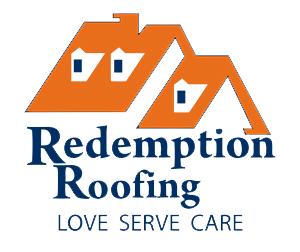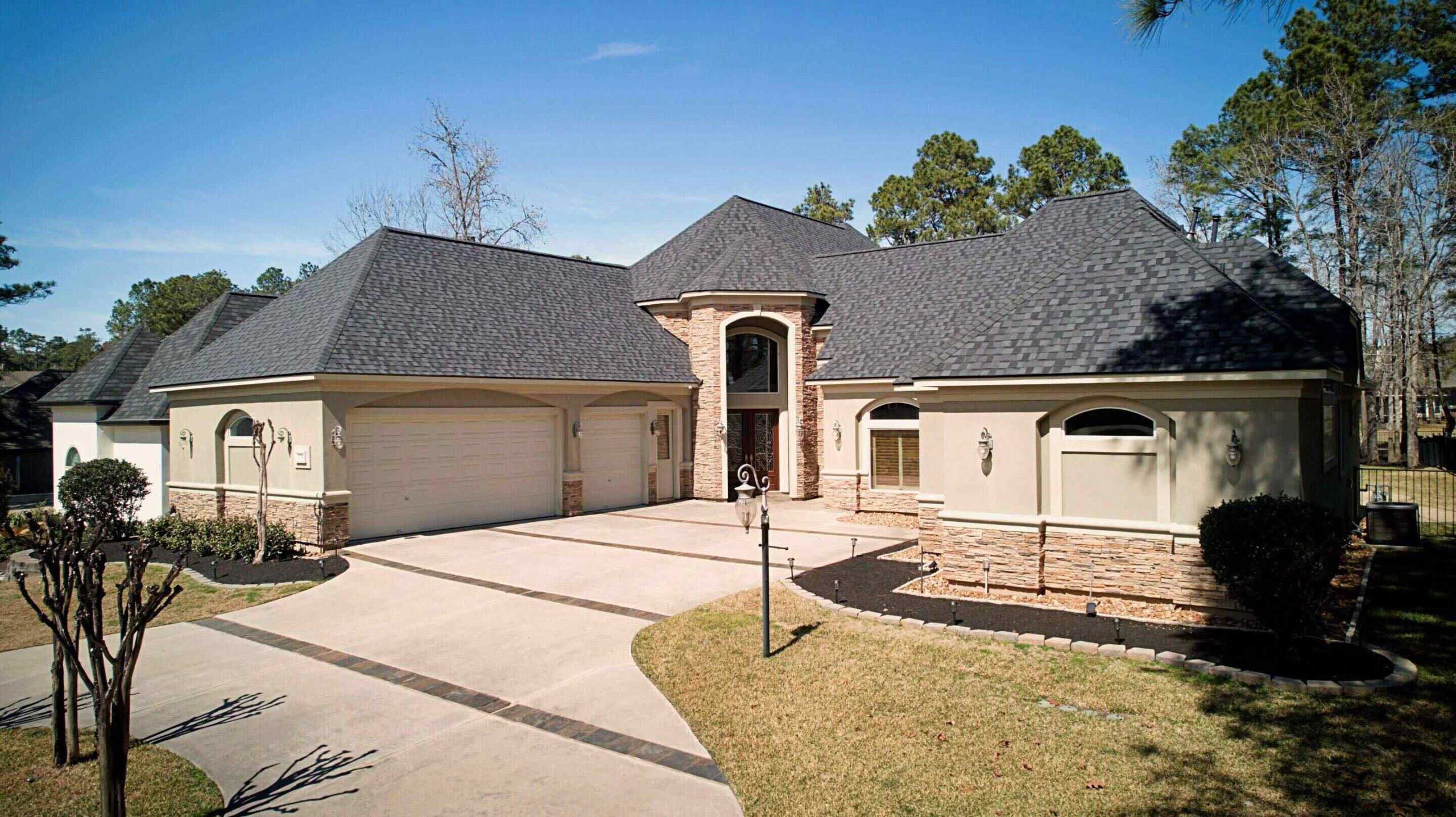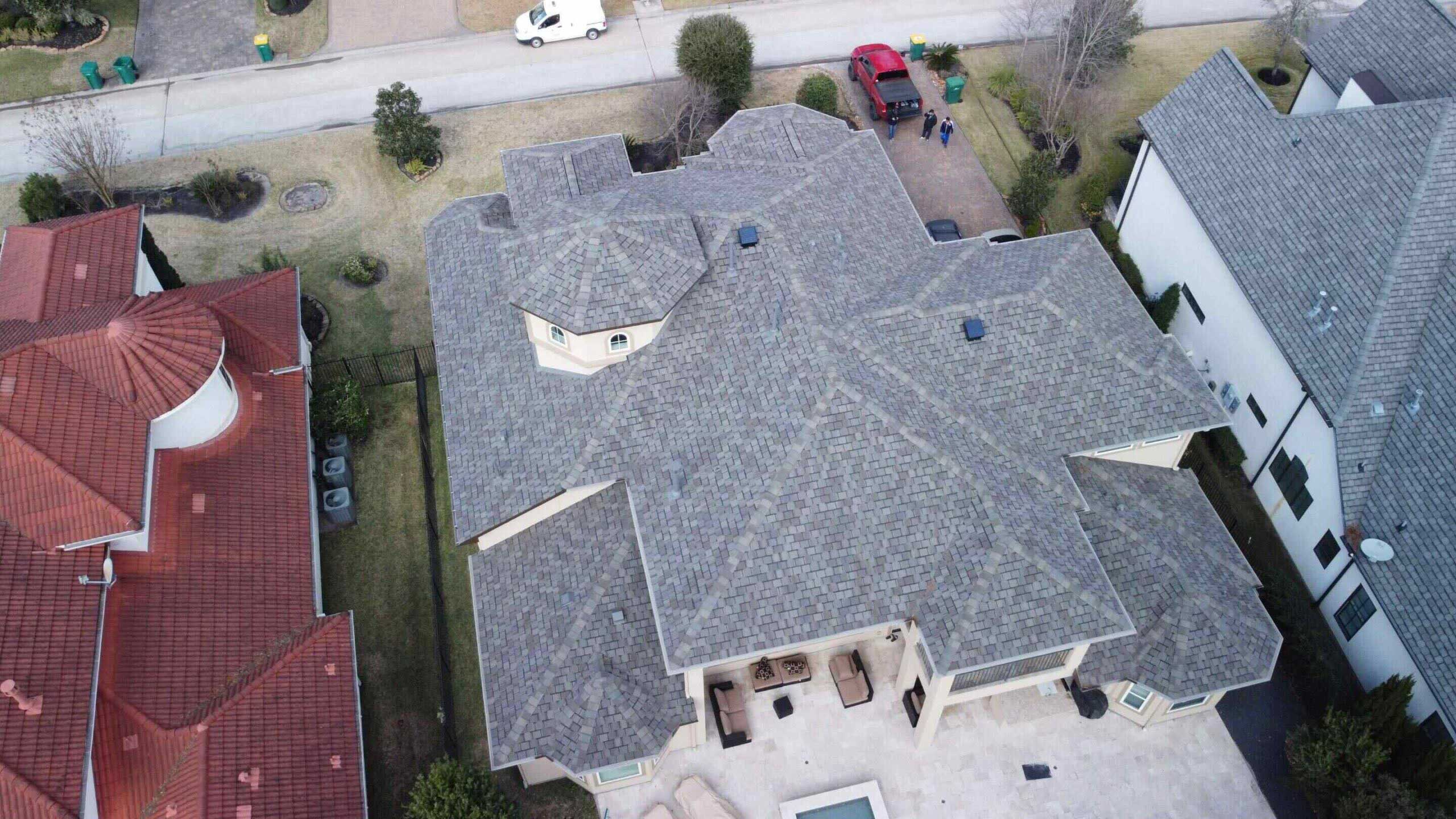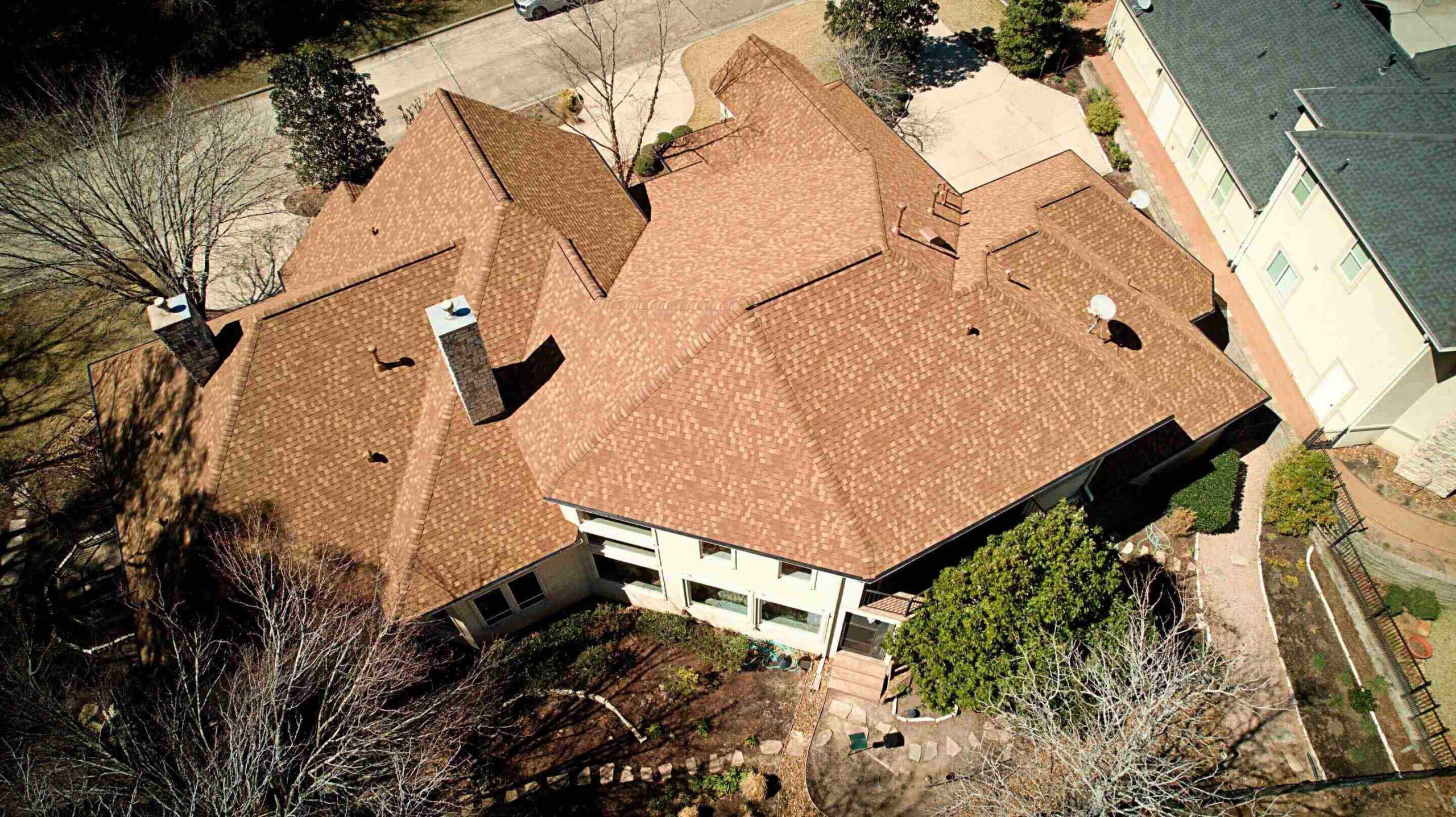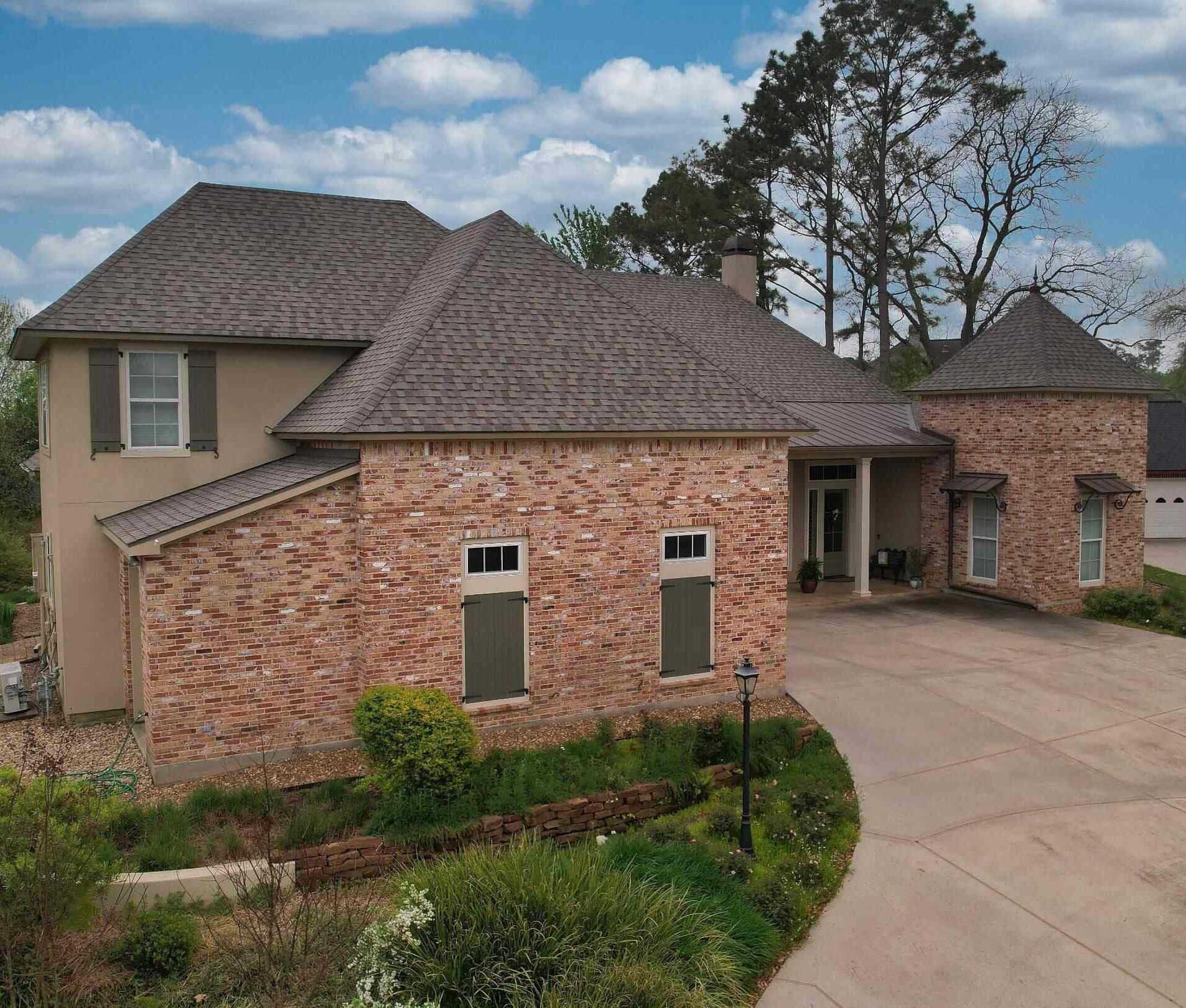
Few things strike fear into the heart of a property owner like the sound of leaking water. Constant dripping is always a bad sign, but it’s even worse when you realize that the sound isn’t coming from a leaky faucet but from somewhere in the ceiling overhead.
Of course, when your roof is leaking, a distracting noise is the least of your worries. Mold and mildew can set in, your water-logged belongings can get destroyed, and you may even have to deal with structural damage throughout your property.
In other words, you’ll need to address the problem fast to minimize the damage and protect your home or business!
With over 35 years of experience in the roofing industry, our team of experts has seen property owners struggle with this issue over and over again. Here’s some of our best advice for anyone dealing with the frustration of a roof leak.
Minimize the Damage
Before you get too far into inspections and repairs, it’s important to minimize any damage to the inside of your home. Leaving water to drip unchecked can trap moisture in your belongings, which can lead to mildew and mold.
Take some time to remove any valuable possessions from the area around the leak. This may mean rearranging clothing, bedding, or furniture. If water has collected on the floor, towel it dry to keep the moisture from setting in as much as possible.
In addition, you’ll also want to cover any large or heavy furniture items that you can’t move. You should also do the same with your flooring to protect it from moisture. In most situations, a tarp will do the trick, though you can also use plastic garbage bags if you don’t have one lying around.
Don’t forget that you should clear away both belongings that were already exposed and nearby belongings. If the leak grows larger, or if more water begins to rain down as you continue to the next steps, it could cause more damage than you’d expect.
Contain the Situation
Once your belongings are out of the way, do what you can to capture the water flowing from your roof.
The tried-and-tested solution for this is to use any available containers you have on hand, such as buckets or trash cans. If the leak is relatively small, you may also be able to get away with using towels for a while.
In the case of a ceiling leak, you can also attach a string from the area with the leak to a bucket, encouraging water to flow down to your bucket instead of splashing elsewhere.
If you notice that the water is coming from a dip, bubble, or bulge in your ceiling or wall, part of the issue may be that water is trapped within the structure of your home. To help, poke a small hole in the wall or ceiling to release the leak into a waiting bucket. This can help prevent the water from spreading and damaging your drywall, and it can also keep the “bubble” from bursting and causing more damage down the line.
If you want to upgrade your container system, using a bottle funnel can help you avoid replacing filled containers while you wait for expert roof service. To do this, cut an empty plastic bottle or jug in half to create a wide mouth, using the bottleneck as the lower end. You can then attach a hose to the bottleneck using duct tape, placing the other end of the hose outside of your home.
Look for the Leak’s Source
Now that you’ve done what you can to protect your belongings from the leaky roof, it’s time to find the source.
Before we talk about inspecting your roof, note that we never recommend that property owners climb onto the roof if the leak seems serious. A bad leak is an indicator of some type of structural damage, and putting your weight on that damage can put you at serious risk. Instead, leave that risk to the experts.
What you can do instead is grab a flashlight to investigate your attic or crawlspace. Based on where the water appears in the ceiling below, check out the corresponding area. However, note that whatever’s causing your leak may not be right overhead, as water may travel from various weak spots or joints in your roof.
If it’s daytime, turn off your flashlight to see if you notice any pinpricks of sunlight coming from overhead. This might be enough to help you identify the location of your leak.
If you can’t find the leak using this method, turn your flashlight on and look for any signs of water damage. This damage may appear in the form of dark stains.
You can also have someone go outside and spray a hose onto your roof. This can help you see the leaking water in action and understand what’s going on.
In addition, consider stepping outside to do a visual inspection of your roof. This is easier if you have a pair of binoculars. Identifying missing shingles, damaged flashing, or fallen tree limbs may not help you fix the roof, but it can help you describe the issue when you contact a roofing expert for help.
Prevent Further Damage
At this point, depending on the source of your leak, there are a few things you can do on your own to prevent further roof problems.
First, try laying a spare tarp over any section of your home that needs roof repairs. Again, we only recommend doing this yourself if the leak appears minor. Don’t take unnecessary risks, and wait until the weather conditions allow you to head up to the roof on a stable ladder.
If the leak is a small one, you may be able to get away with using simple products like caulk or roofing tape. Both of these allow you to seal up the damage fast, especially if the leak only covers a small area. However, don’t count on these solutions for long: they won’t act as permanent fixes, and you may still need substantial repairs to address the root issue.
Contact a Roofing Expert
If you haven’t already done so, contact an expert to inspect your home roofing.
A roofing contractor will check the entirety of your roof to see what’s causing your leak. Once they’ve tracked down the source, they can help you figure out whether you need a few simple repairs or a total roof replacement. They can also offer suggestions on temporary fixes and strategies to maintain your roof’s structural integrity while repairs are underway.
At Redemption Roofing, one of the services we offer is free, no-commitment roof inspections. If you’re worried about the condition of your roof, we’ll check it out, offer our recommendations and estimate, and let you decide what you’d like to do about it. Whether you’re leaning toward repairing or replacing a roof, our certified team can help.
Whatever roofing company you choose to partner with, we recommend getting an estimate and reading the fine print. Your contractor should be able to help you understand exactly what you’re paying for by explaining any unclear line items.
Feel free to do this with two or more companies to compare prices and find a contractor you trust. This is also a good chance to ask any questions about the company’s proposed timeline, materials, and more.
Call Your Insurance Company
Once the ball is rolling with your chosen roofing experts, it’s time to start working with your insurance company. You can reach out to your insurer about a claim as soon as you notice the leak.
Of course, keep in mind that your potential payout will depend on both your policy and the cause of the damage. Many, but not all, homeowners insurance policies cover roof leaks due to storm damage.
However, few policies will cover leaks that were the result of other common types of damage, including the following:
- Negligence or general wear and tear
- Animal or insect infestations
- Building foundation cracks
- Mold or fungus
Be sure to call your insurance agent to find out what your policy will cover.
If your policy does cover the roof damage, it’s time to take some photos of it. Not only can this help prove that the damage exists in the first place, but it can also help you create a record of any belongings that the leak has destroyed. If you don’t already have a home inventory list with photos, now is a good time to create one!
Call Us When Your Roof Is Leaking
When your roof is leaking, Redemption Roofing is here to protect your property. We’re proud to have helped countless customers throughout the Greater Houston area address their roof leaks fast.
Because we focus almost exclusively on roof repair and replacement, we can offer all of the services you’ll need to tackle your issue. We also offer free roof inspections and cost estimates. To learn more about how we can help, call us at (936) 321-3733 or fill out our online form today.
